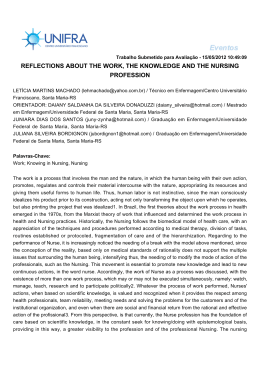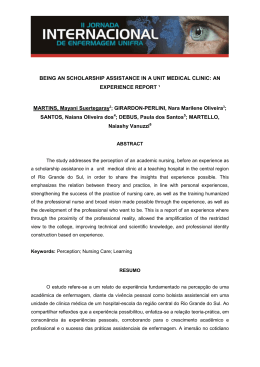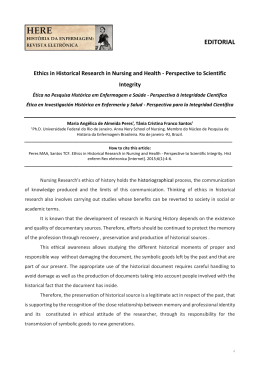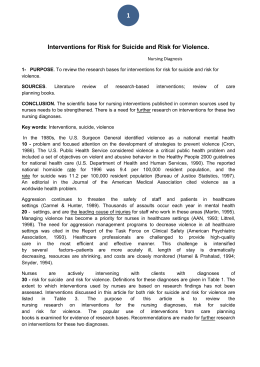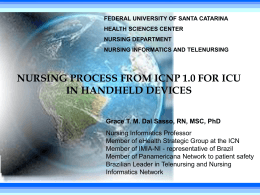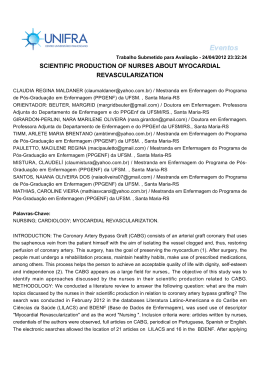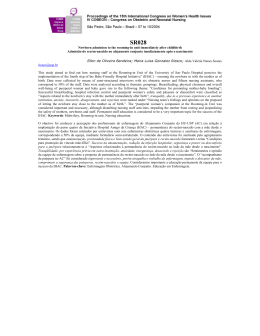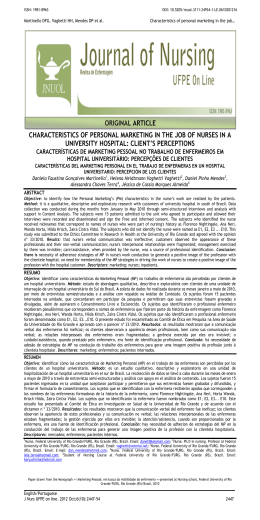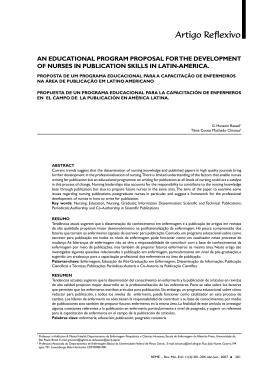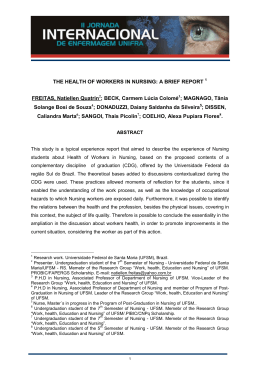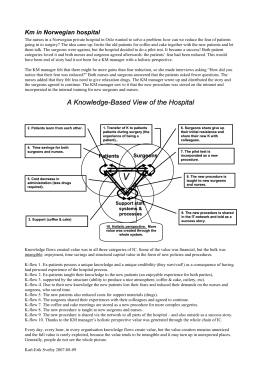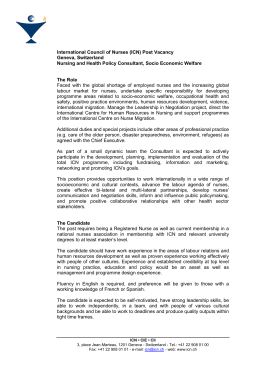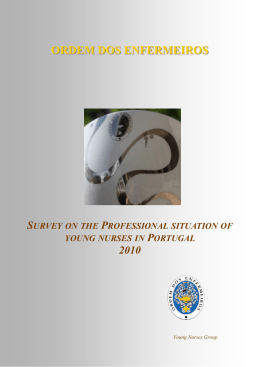A BURNOUT SYNDROME WORKPLACE HEALTH CARE: A STUDY WITH THE PROFESSIONAL TEAM OF NURSING HOSPITAL LANA, Letice Dalla; MÜLLER, Daniela Virote Kassick; SCHNEIDER, Rodolfo Herberto; Marlene Kreutz; PORTELA, Odete Teresinha 1. INTRODUCTION The work is essential to life and happiness of human beings, but can also be a source of tension and estresse1. Thus, the work has not only a material meaning, as a resource for the survival of the individual, but a psychological meaning and social, which can expose the risks específicos2. According to studies, nursing is more exposed to occupational risk factors that can lead to stress ocupacional2. Stress is a set of organic reactions and psychic adaptation of the body when exposed to any stimulus that excites you, annoy, frighten or make feliz2. A subtype of neurosis or occupational stress that professionals in the area of human services are the most susceptible is the professional burnout syndrome or Burnout3 that is because is an interpersonal relationship very intensa4. 2. OBJECTIVE Identify, through the questionnaire Burnout, the occurrence of burnout among professionals in health care (nurses, technicians and assistants). 3. METHODOLOGY This research showed quantitative and exploratório die. The study was conducted at Santa Casa de Misericordia de Porto Alegre, RS, and the sample was accidental, composed of 20 nurses (36.36%), 26 nursing technicians (47.27%) and eight nursing assistants (14, 54%). The research instrument used was the Maslach Burnout Inventory (MBI) developed by Maslach and Jackson5. This questionnaire was translated and validated by Lautert4 and is 1 divided into three subscales that assess three fundamental aspects of burnout: Emotional Exhaustion (EE), Depersonalization (D) and Sense of Professional Incompetence (I). Data collection began in July to November 2003. 150 questionnaires were distributed in different sectors of the hospital, of whom 55 returned duly filled out. The analysis of responses was in SPSS 17.0. The questionnaire responses were scored Burnout with values of zero (0) to four (4) and subjected to a statistical quantity, with the Wilcoxon test and MannWhitney test. 4. RESULTS AND DISCUSSION The role of patient care is exercised by the health care team consisting of nurses, technicians and nursing assistants. Despite the large number of professionals involved with the nursing sector, about almost 5mil employees, the sample, especially among technicians and nursing assistants, was small. Considering that only 36.66% were returned the questionnaires. One can assume that the amount of affected individuals within the institution or that is larger, the really most affected, were not part of the sample. As for the Burnout syndrome, found that nearly half of nurses (45%) have moderate levels of emotional exhaustion subscale, considered by many authors as the main phase and trigger the syndrome, as outlined in Table 1. These moderate levels would indicate the existence of patologia as it is the main scale to the diagnosis of síndrome6. The depersonalization and feelings of incompetence, dominated by low scores for both professional groups, but García7 admits that, regardless of what the burnout subscale starts, not necessarily a person goes through all its phases and you can present pathology. Similar data were observed in this subscale Lautert4 study, which analyzed 72.03% of nurses had conducted themselves professionally, with low Feeling of Professional Incompetence. Leopardi8, also in a study of nurses found that most consider the activities carried out or that they are entrusted with their corresponding qualification. These statements explain the higher prevalence of a low score on this subscale for nurses. Table 1 - Subescala the Burnout syndrome S. de E. E. Escore Profissão N % Law 11 55 Nurse Moderate 9 45 Hight - 2 S. de D. N 19 1 - % 95 5 - S. de S. I. P. N % 13 65 6 30 1 5 Total 20 100 20 100 20 100 Nursing Law 29 82.8 31 88.5 28 80 Moderate 4 11.4 3 8.6 6 17.1 assistants High 2 5.7 1 2.9 1 2.9 and Total technicians 35 100 35 100 35 100 *S. de E.E= Subescala de Exaustão Emocional; S. de D.= Subescala de Despersonalização; S. S.I.P.= Subescala de Sentimento de Incompetência Profissional 5. CONCLUSION The results showed that nurses have higher levels of emotional exhaustion compared to technicians and nursing assistants. Despite the nurses present a lower involvement with patients admitted to the hospital, they have an intense emotional burden in their daily work, they are responsible for the smooth functioning of the health care, where they oversee other nurses, constantly being charged by the hospital administration and organization, in addition to physicians, as to patient care. REFERENCES 1. Paes da Silva MJP. Reflexões sobre a relação interpessoal no cuidar: o fator corpo entre a enfermeira e o paciente. In: Meyer D. Marcas da Diversidade: saberes e fazeres da enfermagem contemporânea. Porto Alegre: Artes Médicas; 1998. 2. Bulhões I. Riscos do trabalho de enfermagem. 2ª ed. Rio de Janeiro: Folha Carioca; 1994. 3. Maslach C. Job Burnout: new directions in research and intervention. Current Directions in Psychological Science 2003; 12(5). 4. Lautert L. O desgaste profissional do enfermeiro [Tese]. Salamanca (Espanha): Universidade Pontifícia de Salamanca; 1995. 5. Maslach C, Jackson S. The measurement of experimental Burnout. Journal of Ocupational Behavior 1981; n 2. 6. Benevides-Pereira AMT. O Estado da Arte do Burnout no Brasil. Revista Eletrônica InterAção Psy 2003; Ano 1, nº 1. 7. García M. Estudios de dos medidas de Burnout en personal sanitário. Psiquiatria 1994; n 10. 8. Leopardi MT. Significação dos atendentes de enfermagem. Florianópolis, SC. Rev. Texto e Contexto de Enfermagem 1997. 3
Download
